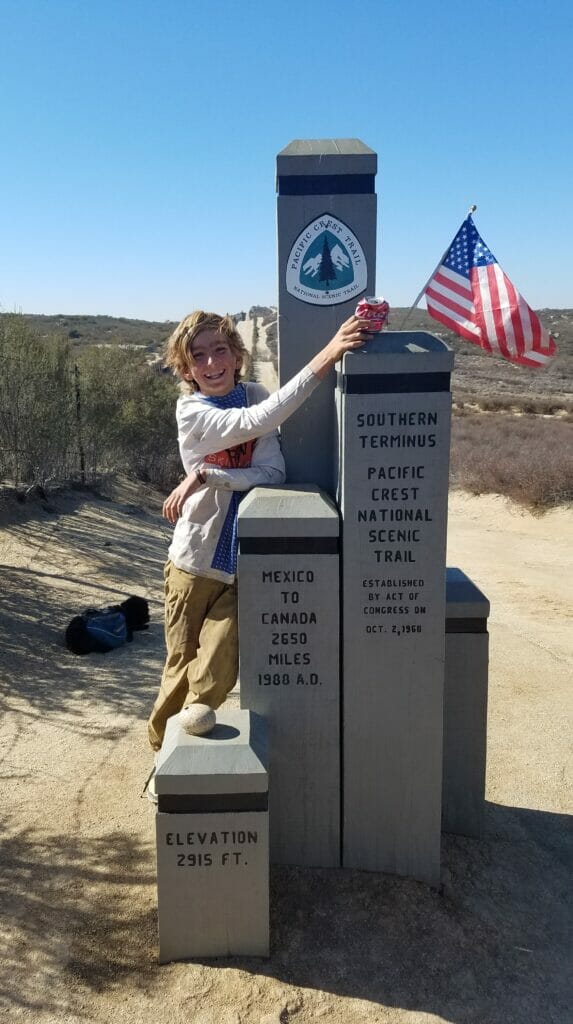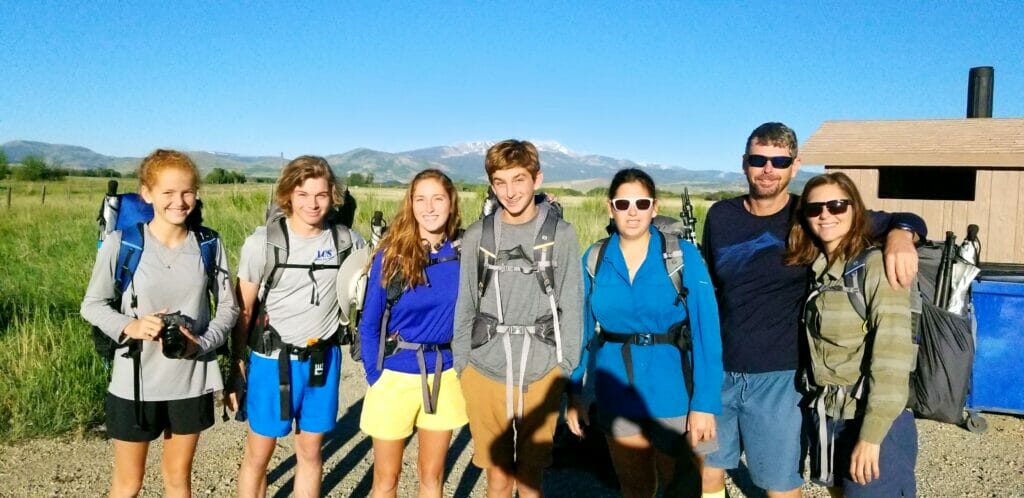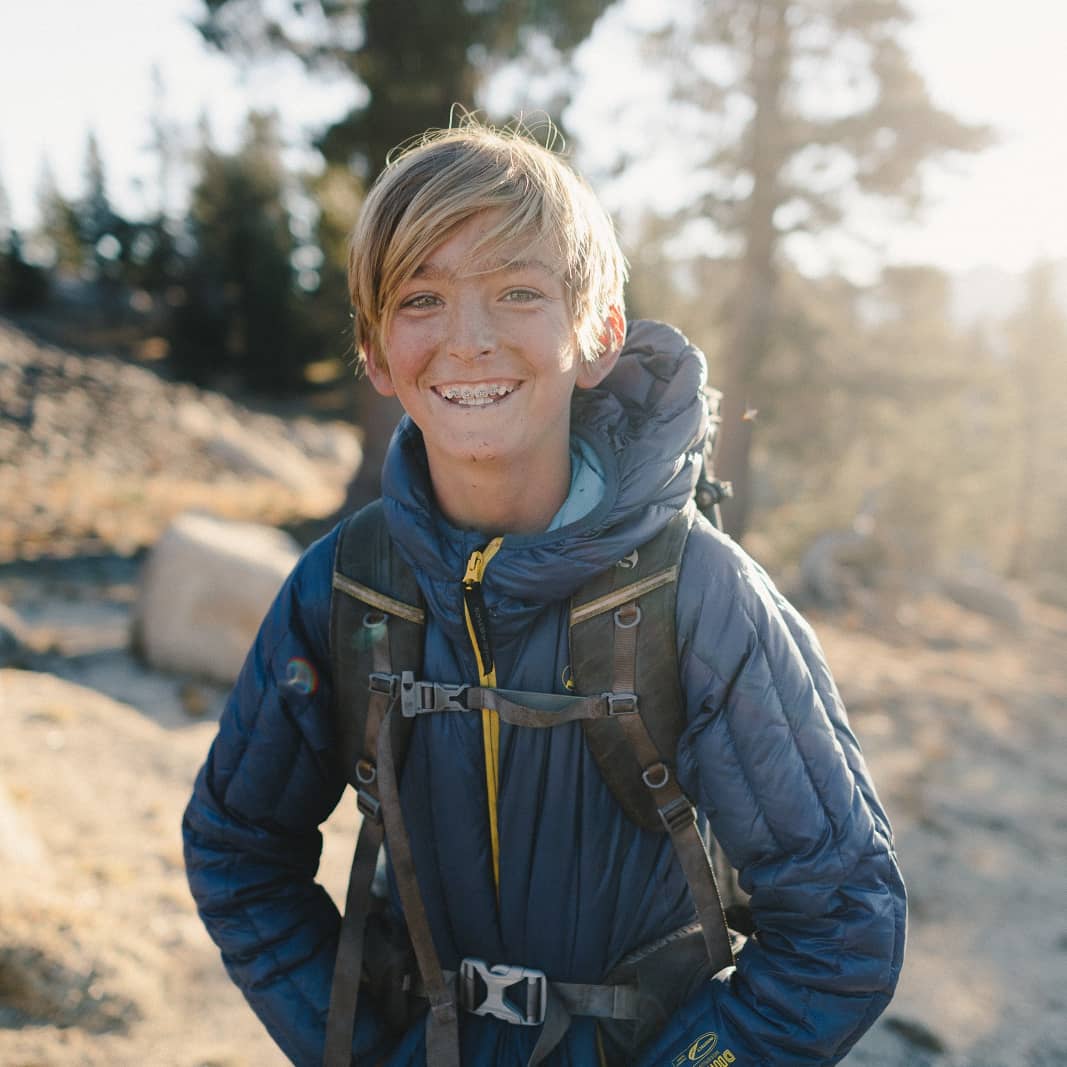Editor’s Note: The Strawbridge family from Lakeland, Fla., is hiking the length of the Continental Divide Trail – all 3,100 miles of it – from Canada to Mexico. Henry Strawbridge, 14, will be providing updates of their journey to Trout Unlimited as they pass through the historic range of seven native trout species. You can track the family and see reports submitted by Henry on this map.
By Henry Strawbridge
In 2018 my family hiked the 2,653 miles of the Pacific Crest Trail. We started at the border of Canada in the Northern Cascade Mountains and walked all the way to Mexico. This year we are doing a longer trail to make it from Canada to Mexico. We started out on June 19 for our hike of the Continental Divide Trail.
During our Pacific Crest Trail hike we passed through a lot of incredibly beautiful mountains. The path we took did lead to great adventures and catching lots of fish.
My dad and I both love fishing. We carried our lightweight tenkara fishing rods on the PCT. Most of the streams we fished were extremely remote, so the trout attacked our bait like they had never eaten before. We had lots of fun fishing. It made the hiking almost bearable. One day in the Sierra, we took a side trail to summit Mt. Whitney, the highest peak in the Lower 48. In the afternoon — while the others slept in their tents — my dad and I caught more than 40 golden trout. It was an awesome experience.

The Continental Divide Trail starts at the Canadian border and runs through Montana, Wyoming, Colorado and New Mexico, making a total distance of more than 3,000 miles. Because we will be on the hike during the first semester of school, we will be doing “trail school.” It isn’t really too much of a change for us since we are already home-schooled. My mom came up with the idea that we would each work on our own unique project. I decided I wanted to do something that included fishing. I reached out to Trout Unlimited and we came up with the of me gathering data about the fish we catch while hiking the CDT.
The CDT passes through many important trout habitats, such as Yellowstone National Park, a stronghold of cutthroat trout. I will be posting blogs every other Friday during our time on the trail.
The data I collect will consist of identifying trout species, water temperatures, habitat elevation, weather conditions, etc. My dad and I built a photoquarium out of plexiglass that will help us document the data. My sister, Georgie, who chose to focus on photography for her project, will be helping me by taking pictures of the fish and aquatic invertebrates I examine in the photoquarium. All of this information will be updated to a map that you can follow as we walk down the trail.
My hope is the information I gather can be useful to Trout Unlimited as they continue their conservation efforts, especially regarding climate change. I might even get to meet up with TU staff and volunteers along the trail to learn about what’s happening in their different projects. I look forward to reporting in on what I’m learning about the trout and all the water sheds I encounter on the CDT.

My family started our CDT adventure Tuesday morning at the Warm Springs Nature Preserve on the Anaconda Route. We have 18 miles of road walk before we get to the trail. We are headed north for 300 miles hoping the trails in Glacier National Park will be open by the time we get there.
COVID-19 note: The Strawbridge family anxiously watched as the coronavirus issue threatened their plans to do the CDT this year. After careful consideration the family made the decision to drive to Montana to start the trip to avoid any possible exposure on airplanes. None of the family members are exhibiting symptoms. They have arranged to be completely supported for the first 400 miles of the hike to avoid contact with local communities and will continue with limited contact with the outside world throughout the duration of the trip.



